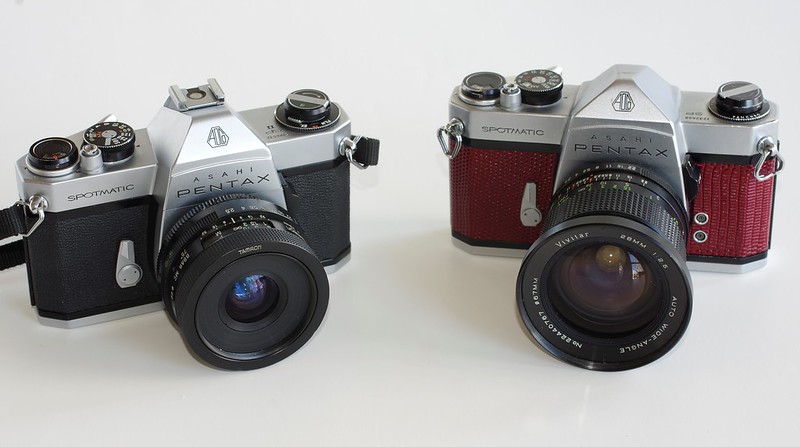 Originally posted by stevebrot
Originally posted by stevebrot 
Not by itself, though it is (obviously) something that is inherent in the design.
Comparison of the Super-Takumar 28/3.5 v1 and v2 might be a good example. The earlier lens is fairly bulky to accommodate a big front element (filter size = 58mm). The later version is much smaller (quite tiny, actually) with a modest-diameter front element (filter size = 49mm). It should be noted that both lenses have identical FOV and "see" the same amount of light at the surface .
The explanation is simple.
The speed of a lens is not given by the diameter of the front element nor by the diameter of the "hole" inside the objective (with the iris wide open).
It is given by the diameter of FL / "entrance pupil", both expressed in the same unit (usually millimeters).
The enlarging power of the elements in front of the diaphragm comes into play. That power of course can be negative (which is what happens with retrofocus designs, IIRC).
You can easily check with any lens fitted to a standard leaf shutter. All large format lenses set in a leaf (or central, if you prefer) shutter, and all the Schneider repro and enlarger lenses which use standard barrels are built the same way: there are two cells, one in front and one behind the iris/shutter, that can be easily unscrewed.
If you remove the front cell and measure the max aperture with a ruler, you have a number.
If you screw the optical cell back, keep the diaphragm wide open, and place a ruler in front of the objective, you can look (one eye, in line with the optical axis) that the diameter of the "apparent aperture" (read, the entrance pupil) is often different from the measure you've taken before. Most of the times the difference is minimal, because most LF and enlarger lenses are almost symmetrical double gauss.
Other designs, like the wide angles for SLR cameras, would show substantially different measures.
So yes, the design of the lens makes a difference

Apart from the basic laws of optics, there is one thing that was true 160 years ago, when my oldest lens was manufactured, and is still true today: there is no perfect lens. The blanket is always too short, if you cover your head, your feet will get cold.
We can't have cheap, fast, small and sharp at the same time. Even if we forget about cheap, we still have one term too many.
Over the years the compromises have gotten better and better. They are still compromises though, the name says it all...
Cheers
Paolo


 Similar Threads
Similar Threads 














 Post #4 by pschlute
Post #4 by pschlute








